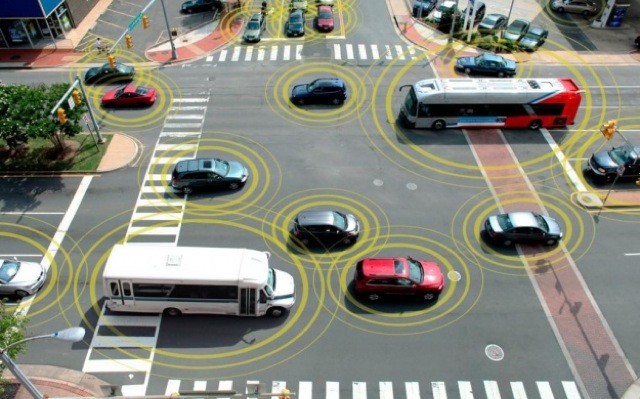The National Highway Traffic Safety Administration (NHTSA) says it wants to require auto makers to build vehicle-to-vehicle (V2V) communications systems into new cars. Calling V2V “the next generation of auto safety improvements,” the agency says such devices would “improve safety by allowing vehicles to “talk” to each other and ultimately avoid many crashes altogether by exchanging basic safety data, such as speed and position, ten times per second.”

The government wants every vehicle on the road to transmit its location to every other nearby vehicle–as well as any other receivers that happen to be in range.
Supposedly, “the system as contemplated contains several layers of security and privacy protection.” However, privacy advocates should be far more suspicious of V2V than of electronic vehicle-mile fee systems. The big difference between them is that V2V systems by definition incorporate both a receiver and a transmitter, while it is possible to design vehicle-mile fee systems that do not include a wireless transmitter. No transmitter means no invasion of privacy is possible; on the other hand, despite whatever privacy protection is included in V2V, a transmitter necessarily allows someone to receive the signal.







